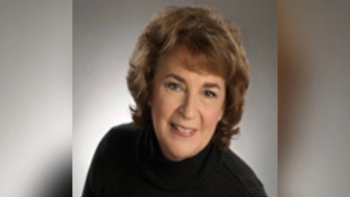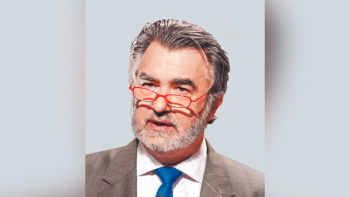
How the Pandemic Facilitated Clinical Trial Diversity Inclusion
Thad Wolfram, President, Matrix Clinical Trials at Matrix Medical Network, speaks about his experience utilizing decentralization methodologies to increase clinical trial diversity inclusion by going deep into diverse communities.
Clinical trial diversity inclusion has recently been at the forefront of FDA’s initiatives. Sponsors have adopted diversity in clinical trials through
Moe Alsumidaie: The need for more diversity in clinical trial participant populations is long overdue. From your experience, how has the issue of diversity in clinical trials improved over the last year, and what can we expect in the future moving forward in a post-pandemic world?
Thad Wolfram: It’s been known for quite some time that there’s a lack of diversity among clinical trial participants, but it really wasn't until COVID-19 shined a light on the lack of equity around healthcare, as well as the lack of diversity in clinical trials, and what that could mean for a potential vaccine and treatment, that regulators finally stepped in. This put additional pressure on sponsors, along with public pressure on diversifying participant populations, and I. In response, several sponsors presented new landing pages around diversity in clinical trials and new recent strategic statements, saying, "“We're only going to partner with those who have their own strategy for addressing this.” We, as a society, and the regulators and the industry, as a society and the regulators, and the industry, we all recognized the problem and knew we needed to solve this moving forward.
MA: Matrix Medical Network brought clinical trials to typically underserved communities during the most critical times throughout the pandemic. How did you connect with these communities to encourage enrollment, and what can be learned? How were you able todid you connect with communities in very specific particular pockets that reject clinical trials and reject new medicines, especially vaccines?
TW: I think first, it ties back to the fact that Matrix has seen some hesitancy amongst the underserved populations because of how they have been treated in past clinical research. We were able to talk to and educate folks on what's happening with COVID-19, since, as an enterprise, we were also part of screening and testing, and eventually become a part of vaccination efforts. Similarly, we were a part of clinical trial efforts. Our ability to run small, compact mobile health clinics allowed us to cover a lot of much ground within urban areas to get to these underserved populations as well as, for instance, large mobile health clinics out on Native American reservations helping reach those communities. So, I think it’s the combination of the reach, the flexibility, the fact that we really value our relationships with the folks in those communities, and our ability to build trust and confidence in what we're helping to bring to them that allowed us to have such a strong impact.
MA: Let’s talk more about that education around clinical trials and the vaccine. As a decentralized clinical trial healthcare provider, could you talk about some of the initiatives on where you're promoting clinical trial education?
TW: One of the challenges, historically, and this goes back to the diversity aspect for trials, is there's a lack of awareness of the availability of a clinical trial. We’re bringing all that information to underserved communities to promote that dialogue. We start with local community leaders to really help them to understand what we’re doing with patient recruitment for a clinical trial, specifically, how we go about that and what value clinical trials bring. One of the examples I like to give is if you take oncology, for example, for a patient who doesn’t have any other treatment options available, a clinical trial can actually become a treatment option for them. We’re helping to look at ways we can bring those treatment options to the underinsured, the uninsured, and to populations that otherwise would not have that option of care. We’re helping to facilitate those local conversations around what a clinical trial really is, how we can help individuals and what it can mean for their livelihood.
MA: Can you tell me about the benefits of using mobile health clinics for recruiting patients and conducting clinical trials? What are the shortcomings?
TW: From a benefits perspective, the first is that it allows us to meet a patient anywhere, and that which really does help. For these underinsured and uninsured populations that are not going into a physician's office, they don't have a physician who is talking to them about a clinical trial to frame it as something they can take part in. So first and foremost, it's it’s about enabling the conversation to happen, to give them any line of sight into a clinical trial. And the mobile health clinic gives us provides us with that mobility to get into the community and enable conversations that otherwise wouldn’t have happened. That's That’s one of the big significant benefits; just providing the awareness, access, and the opportunity. There are some risks and some downsides. For instance, we are limited to whatever tests, imaging, or screening we can bring along with us. To mitigate for that, one of the things we're we’re working on is to figure out how can we figuring out how we can further diversify the breadth of screening we bring into the community to support the broadest patient population possible.
MA: Since we're talking about Matrix initiatives, could you tell me about how those initiatives and priorities are coming how those initiatives and priorities come into clinical trial design, particularly in the mobile setting?
TW: Decentralized trials saw a great tremendous shift in adoption during the last year or so. When a participant is in a clinical trial. Historically, when a participant is in a clinical trial, they’re taking place at a research center. And so, the historical view is really based around this idea of a site, an investigator, and the research taking place. Now, we’re at a pivotal point where we’re shifting the paradigms to recognize that a clinical trial takes place 24 hours a day, seven days a week, wherever the participant is. And so, what we're we’re doing with the decentralization of trials is we're following that patient, whether they’re at a site, whether they're at home, whether we're we’re managing a virtual visit, or whether we're monitoring with wearables, the trial is always happening. What the mobile health clinic does is it offers yet another lever, if you will, that we can pull around the flexibility of the trial to meet the needs of the patient experience. If the participant isn’t comfortable with us going into their home, the mobile health clinic allows us to bring the clinic to them. We can set up a clinic in an area that otherwise wouldn’t have a research site, which allows for allowing several people to participate at once via that clinic. We wouldn’t want COVID-positive patients going into a medical facility, so we operated as a contained extension of that site with strict safety protocols to be able to enable these trials to happen, but in the safety of that environment. It's all about the flexibility of a trial.
MA: Speaking of the flexibility of trials, can you tell me about the challenges that sponsors faced in the beginning of the pandemic and what was so challenging with implementing decentralization through virtual techniques or through the decentralized techniques that at the beginning of the pandemic and what was so challenging with implementing decentralization through virtual techniques or through the decentralized processes you're you’re experienced with?
TW: Over the last five to 10 years, there have been many different capabilities and techniques that have been brought into the market that there’s this huge vast, fragmented ecosystem. At the beginning of the pandemic, many trials were flat out halted. Many trials were flat-out halted at the pandemic’s beginning because the participants couldn't couldn’t go into a research site. Other trials that were intended to begin were delayed or halted stopped because recruitment couldn't couldn’t take placeoccur in an in-person environment. I think sponsors see our capability to quickly shift to the best option and adapt a trial design or protocol to take advantage of decentralized capabilities as a huge benefit. Secondly, it’s beneficial to work with regulators, to really understand what the regulators would accept,to understand what the regulators would accept because the downstream risk was always regulatory acceptance. We saw regulators also willing to say, "We’re going to learn through this process. We’re going to actually to understand what does and doesn't work through decentralization.” I think what we're we’re seeing coming out the other side is a lot of adoption willingness. We have sponsors, CROs, and regulators who have learned what we can do and where it does work.
MA: Now that things are opening up again, of course, perspectives have changed, ; do you see a shift back? Do you see a hybrid? Where do you see decentralization fitting in here?
TW: I think sponsors, CROs, and regulators learned so much over the last year about what we can do and what we can do differently. What we do on a clinical trial, even from a standard-of-care perspective, even from a standard-of-care perspective, what we do on a clinical trial generally reflects what the standard-of-care in the real world looks like. The other thing that's that’s happened this year is that everyone has gotten much more comfortable with virtual visits and with not needing to necessarily go into the doctor's office go into the doctor’s office necessarily. We’re really at a jumping jumping-off point where we're we’re going to continue to build on this decentralization. And I think that while there will always be gold standards in clinical trials that are tied to traditionally run trials wrapped around clinical research sites, I think at a minimum, hybrid studies between site-based and decentralization is here to stay, and it's it’s only going to grow moving forward.
Moe Alsumidaie, MBA, MSF, is a thought leader and expert in the application of business analytics toward clinical trials, and Editorial Advisory Board member for and regular contributor to Applied Clinical Trials.
Newsletter
Stay current in clinical research with Applied Clinical Trials, providing expert insights, regulatory updates, and practical strategies for successful clinical trial design and execution.




